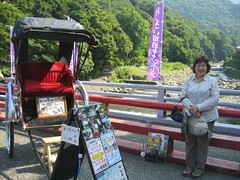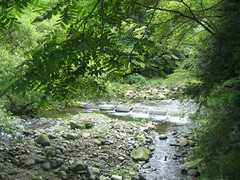Sunday 16 November 2008
Scenic South Coast NSW
Saturday 15 November 2008
A Whale of a Time - Jervis Bay
.JPG) |
| Jervis Bay |
.JPG) |
| Booderee Telegraphic Creek Trail |
The Kiama blowhole is a natural rock formation that traps a large volume of air within a small cavern. With the gush of the next wave, the seawater is forced up an opening resulting in geyser-like fountain of spray. Kiama is the aboriginal word for ‘the sea is speaking’. We fetched Becky from the Kiama train station to complete the entire Lee-Gifford family of 6 wise owls the term Pat uses to call us.
Friday 14 November 2008
Pambula and Ben Boyd Nat Park
.JPG) |
| Friendly Kangaroo |
We stayed at a cabin-like lodging called #1 Heaven. Next morning the Kangaroos were all over the streets. James had his first close look of the Kangaroos in the wild.Becky and I went whale watching up the Marimbula coast and had a real treat of 4 inquisitive humpbacks. They waved their flippers at us, poked their noses right up the side of the boat, the True Blue whale watching company.
Thursday 13 November 2008
Snowy River
8 to 10 Oct 2008 We stayed at the Highland Lodge managed by Patrick and Katrina. There are cows, chicken, ducks, geese, guinea fowls, a donkey and two alpacas. It is a small farm. James got to watch us feed the chickens each morning. Jindabyne is the main town along the pass through the Snowy Mountains from the coast of NSW towards the Murray River basin of Victoria.
Modern Jindabyne was created in the late 1960s when the original town was relocated by the Snowy Mountains Authority for the Snowy Mountains Hydro-Electric Scheme. The original town now lies under the waters of Lake Jindabyne an artificial lake. The highest ski fields in Australia, all within Kosciuszko National Park
Wednesday 12 November 2008
Kayak Down the Murray
.JPG) |
| Together at the Murray River |
.JPG) |
| Kayak down the Murray |
Yarrawonga-Mulwalla combines a magnificent sunny climate, recreational facilities & home comforts... Close by Lake Mulwala is the centre of water activities with waterskiing, windsurfing, canoeing, swimming, fishing and cruising restaurants. The twin towns of Yarrawonga-Mulwala, separated by the Murray River, boast a large and beautiful man-made lake and attract holiday makers, golfers, anglers, tennis players, aquatic sports fanatics, bush walkers and campers from all over the world.
Rutherglen is the town famous for the wineries around it. The first planting of grapes for wine occurred in the 1850s. Spring is not a time of harvest, yet the green scenery, clean air and clean rivers make the valley a perfect backdrop for an inspirational food and wine tasting. That was exactly what Pat, Becky and I did. The three of us tasted and bought the wines at Buller, Campbell and the Stanton and Killeen wineries. We ate a sumptuous lunch at the All Saints winery. We found that the vineyards would serve delicious meal and we returned with the Giffords for a meal at the Pepper Sisters
Tuesday 11 November 2008
Canberra - Last-stop Ambledown Brook
17 to 18 Oct 2008 “Last Stop - Ambledown Brook” is set amongst rolling countryside overlooking the Brindabella ranges just outside Canberra in the A.C.T. It offers the romance of a bygone era and a chance to unwind in unique surroundings.
We stayed in a restored 1929 Melbourne tram which has a double and twin bedroom, a cosy sitting room, adjoining bathroom and breakfast area. The view of the Brindabella range is very beautiful. The rustic and old fashion feeling in the train carriages made our
Thursday 26 June 2008
Hakone And The Elusive Mount Fuji 16 to 21 June 08
We arrived at Sun Hotel Resorpia, our 6 nights time-share exchange after a A380 airbus flight, the Narita Express to Tokyo, Shinkansen Kodama bullet train to Odawara, the Odakyu line to Hakone-Yumato. From there we boarded the mountain train, the Hakone-Tozan rail to Gora.
The Hakone-Tozan mountain rail company celebrated its 120th anniversary this year having been founded in 1888. In summer one could call it the Hydrangeas (Ajisai) Trail since both sides of the tracks are lined with a plethora of colours from the blooms of this plant. This train climbed .jpg) several hundred metres up the mountain on a switch back system. This probably reduces the length of journey. The small train zig zags its way back and forth with trains switching with each other at the end of 3 switchbacks.
several hundred metres up the mountain on a switch back system. This probably reduces the length of journey. The small train zig zags its way back and forth with trains switching with each other at the end of 3 switchbacks.
The resort sits on the slope of Mount Sounzan. To reach it we had to travel on a funicular railway to Naka-Gora. In our haste we got out on the wrong side of the tracks. We needed to cross to the other side but there was no bridge. The only way possible was to wait for the next train to arrive and use the train as the linkway to cross over. Picture crossing the carriage crowded with tourist and dragging our luggage behind us!
A 3-day Hakone Free pass costing ¥4400 (S$57) allowed us unlimited travel around Hakone region and several discounts to museums and restaurants. We used it to our heart's content the next day, 16 Jan 2008. Starting from Naka-Gora station which is next to Resorpia we took the first Funicular railway trip up to Mt Souzan. We were too early for the cable car but took the liberty to refresh ourselves with the floral scented fresh air, mountain mist and slight drizzle. The double carriaged cable ride led us up the thick mountain mist to the peak with zero visibility of the valley below.
A brief stopover at the Owakudani sulphurous hot springs valley allowed us to buy the famous Kurotamago black eggs. These eggs are hardboiled in the hot watery mud of the springs causing the shell to be blackened. It is said eating one of these eggs would extend lifespan by 7 years. In which case, Pat and I added 21 years each since the smallest package is a bag of six consumed over 2 days. The air was filled with odorous hydrogen sulphide as we meandered our way between the hot sulphur beds. One must not stop for too long, they say because the gas can overwhelm the poor tired souls. So much for gaining 21 years each.
Tuesday 24 June 2008
Lake Ashi and Hot Springs
After lunch we visited the Hakone checkpoint which showed how the Shogunate controlled the only road from Kyoto to Edo. The diodoramas illustrated how guards controlled the traffic of merchandise and the passage of women.
Nearby, sited on a small island hillock is the Detached Palace, once the summer residence of the royal family. This is a small Victorian-style mansion which has a very good view of the Lake and on cle ar days, Fuji-san. We enjoyed the tranquil settings of a well-manicured Japanese garden. Eventually we found ourselves trekking .jpg) under the shade of tall cedar trees of the Ancient Cedar Avenue. The Edo shogunate ordered the planting of these tall trees providing the weary Kyoto-Edo traveller shade from the warm summer sun and shelter from the wintry snow.
under the shade of tall cedar trees of the Ancient Cedar Avenue. The Edo shogunate ordered the planting of these tall trees providing the weary Kyoto-Edo traveller shade from the warm summer sun and shelter from the wintry snow.
We ended this long day with a refreshing dip in hot-springs. A visit to a Japanese Onsen is not for the shy and faint hearted. For one thing, the baths are communal and the next, bathers are supposed to indulge completely naked. It takes quite a while to get use to this lack of privacy but the Japanese use the bath for a good time of fellowship in a completely relaxed surrounding. One can presuppose that in these exposed surroundings, pristine settings lies the ingredients for honest unfettered relationships. The baths are separated between sexes of course for otherwise there will be no relaxation at all. So in the quiet wooded surroundings by the hillsides, we took our dips alternating between the hot waters of spring and the cold breeze blowing through the shaded forest. We enjoyed the sound of birds singing and the occasional butterfly flitting about the flowers leaves in the garden.



.JPG)
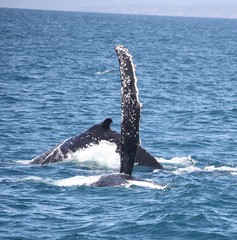
.JPG)
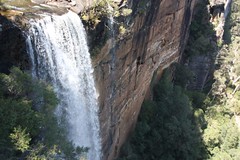
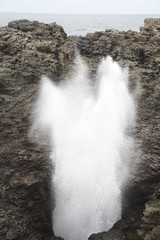
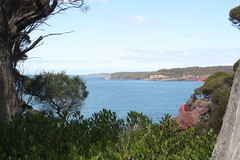
.JPG)
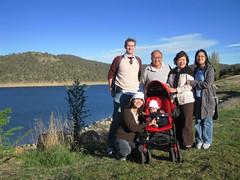
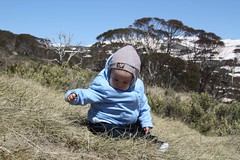
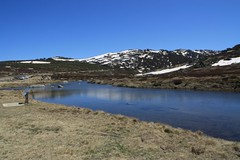
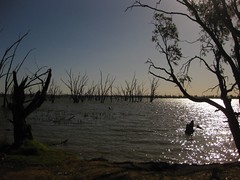

.JPG)
.JPG)

